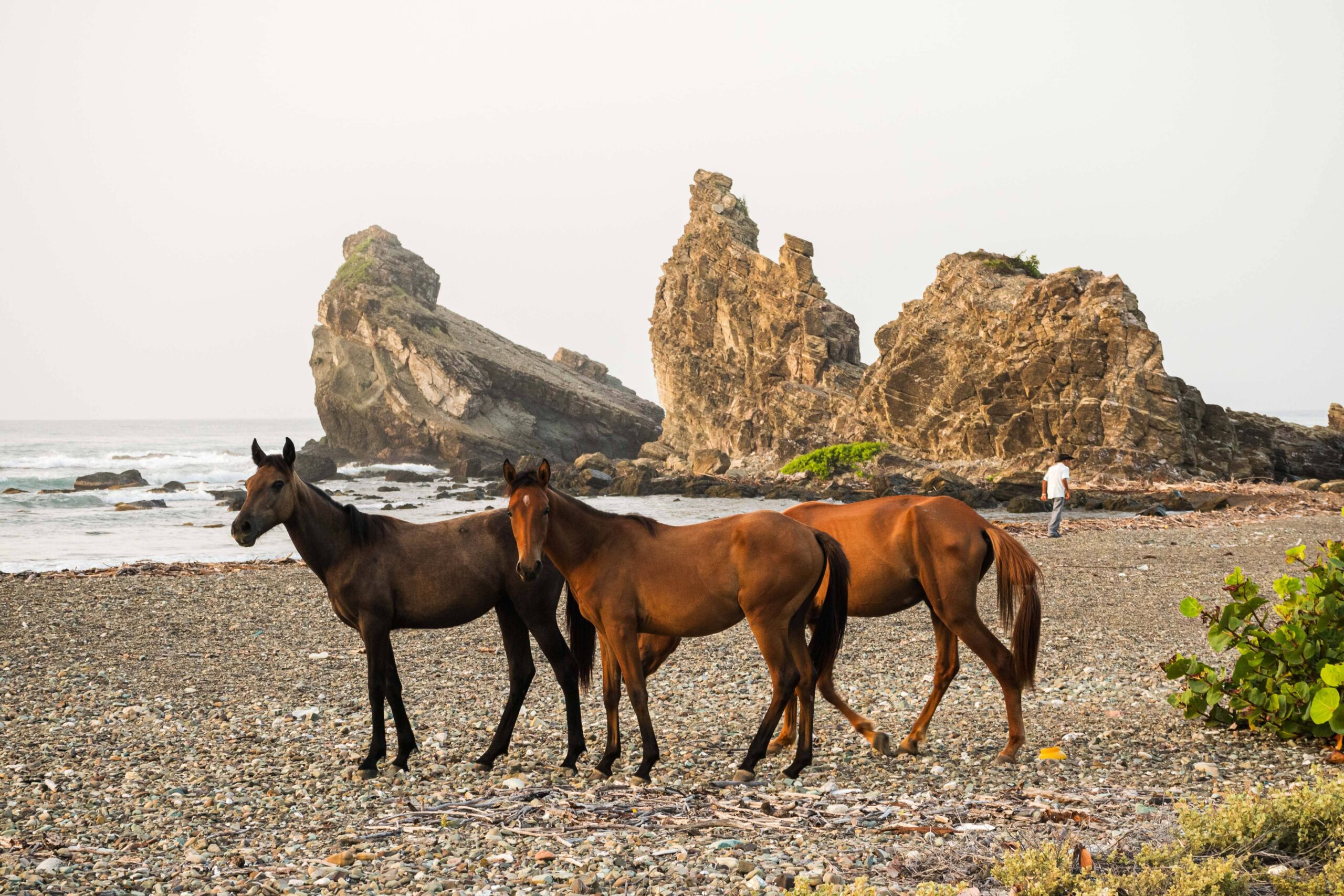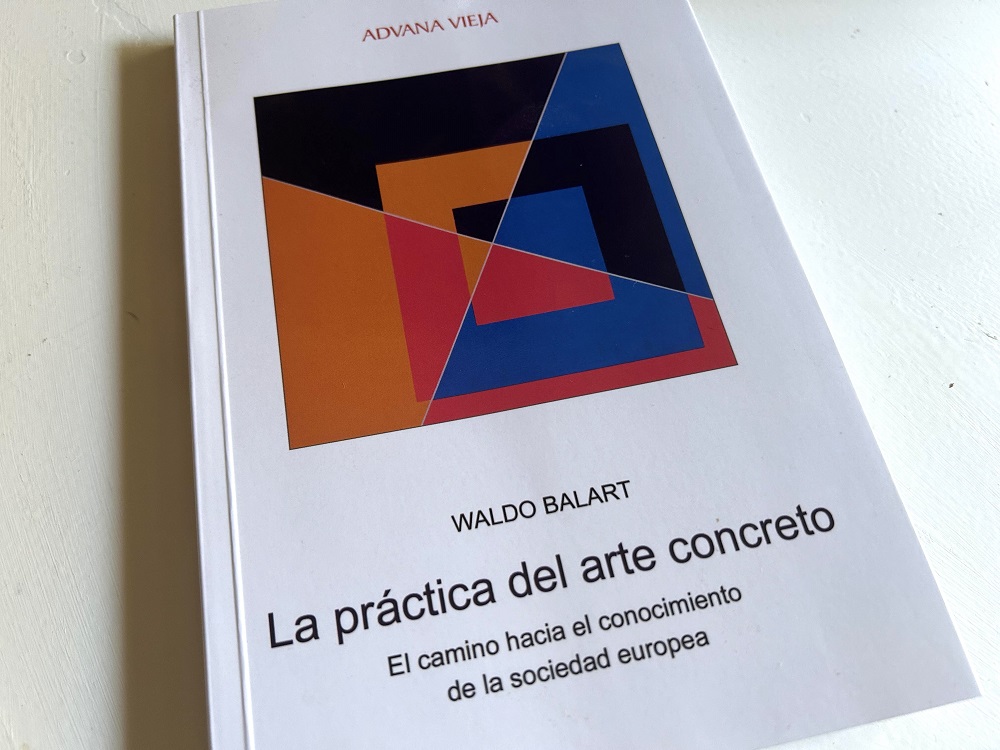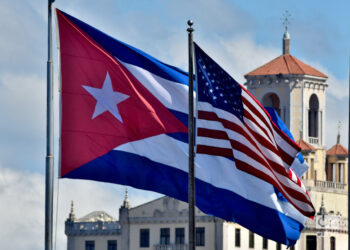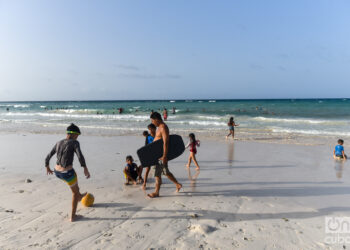Nothing is more concrete, more real, than a line, a color, a plane.
Theo van Doesburg, father of concrete art
“They changed my color when I left,” he says as if revealing a miracle when I notice the clear blue of his big eyes. “They were green,” he says, “and when I saw myself in my passport photo, they were blue. And they are still blue.”
Waldo Balart (Banes, 1931) had his photo taken when he was about to leave Cuba to settle in New York. It was 1959, and his trip, like the changes on the island, would be a journey of no return. It was in the Big Apple where he set out on the path that would make him famous and that, more than sixty years later, would take us to visit him in his home studio in Madrid: painting, Waldo Balart became a concrete painter.*
Throughout his career he has had fifty personal exhibitions and has participated in more than 150 collective exhibitions in Europe, the United States and Latin America. His work is part of private and public collections, including those of the MoMA and the MET in New York. Balart has not only practiced concrete art with his hands but has also theorized about it. His reflections were collected in the books Ensayos sobre arte (1993) and La práctica del arte concreto (2011).
“But all that is blah blah blah,” he says sarcastically about his own theoretical work. It is pure modesty; his essay work has represented an essential contribution to thinking about this artistic movement.
At 93, Waldo Balart looks attentively at the lips of those who speak to him because he hears poorly; now he listens with his eyes. He insists that, fortunately, it does not affect his work: “In fact, it disconnects me, it helps me!” says the painter and bursts into laughter. To record this video chat, he leaves his wheelchair and moves to the stool on which he works, in front of a piece he has called “Permanencias.” He does so with the help of a walker that his hands full of paint have filled with colors; a casual canvas.
Waldo Balart moved to Madrid in the 1970s, after living ten years in New York. The New York of the 1960s. “If I go now, it’s a city that demands too much. It’s something else. In the 1960s it was formidable. I miss New York as it was in the 1960s.”
What was it like?
Fantastic! Fifteen years after the World War had ended, and in NY there were as many Americans as European and Latin American exiles.… It was a mix of everything, and everyone was searching, trying to do something. There was a very nice idea of effervescence. In which, of course, at 30, you got involved.
Sixty years after leaving Cuba, you haven’t lost the accent.
I don’t want to. I don’t see myself speaking like a Spaniard.
How was it with English?
I really had to learn it. I looked up “pillow dictionaries.” But I was 30 years old, it wasn’t difficult for me. That’s how you learn English, haha! But I also went to a school.
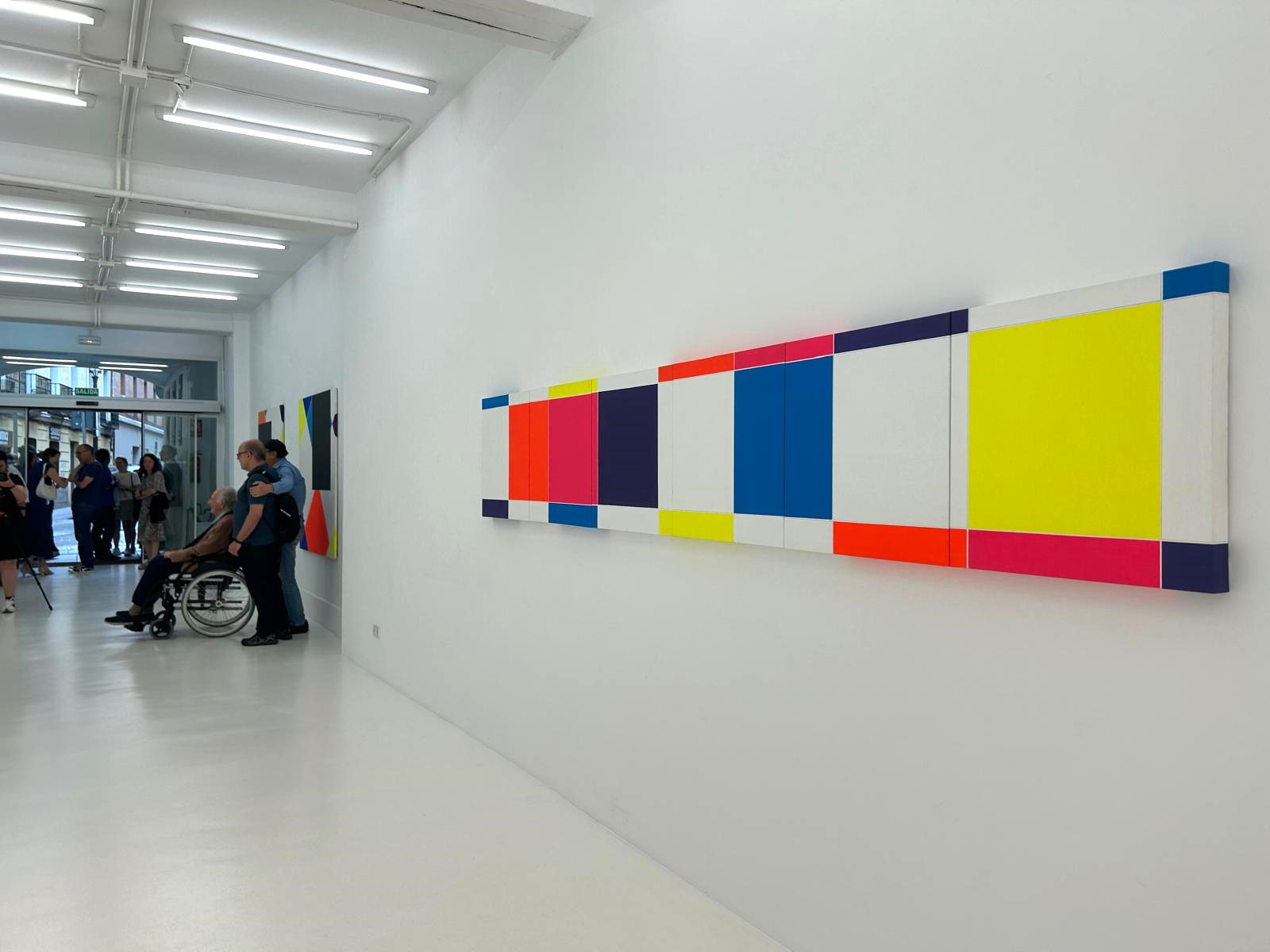
What are the numerical patterns that we see in every corner of your studio?
I call them the code of the structure of light. I make them from the composition of light: violet, 1; ultramarine, 2; cyan; green…it’s the order in which the colors come in the light. Based on that I make this axiomatic order, and from there I work. It’s as if I were dosing the light: 1, 2, 3, 4, 5, 6, 7, 8…each number corresponds to a color.
It’s a mental organization; it’s not a truth; it’s just a way of developing instinct, interest. I work on that, longitudinally and transversally, and I put them together. But there is no absolute truth in that. It’s just a mental organization, based on light.
It’s a development; it does not mean “I found the truth”; I am developing expression and what interests me: color.
At the same time, the search for color is circumstantial. For me, the whole of living is important, within which my expression is essential; but I have to do everything else, like anyone else.
My current routine is, after breakfast, to sit here and work. In winter I find it difficult to work in the evening, but in summer it’s easier. I work in the morning, rest at lunchtime, and usually come back in the evening. I work with natural light, but I always use artificial light.
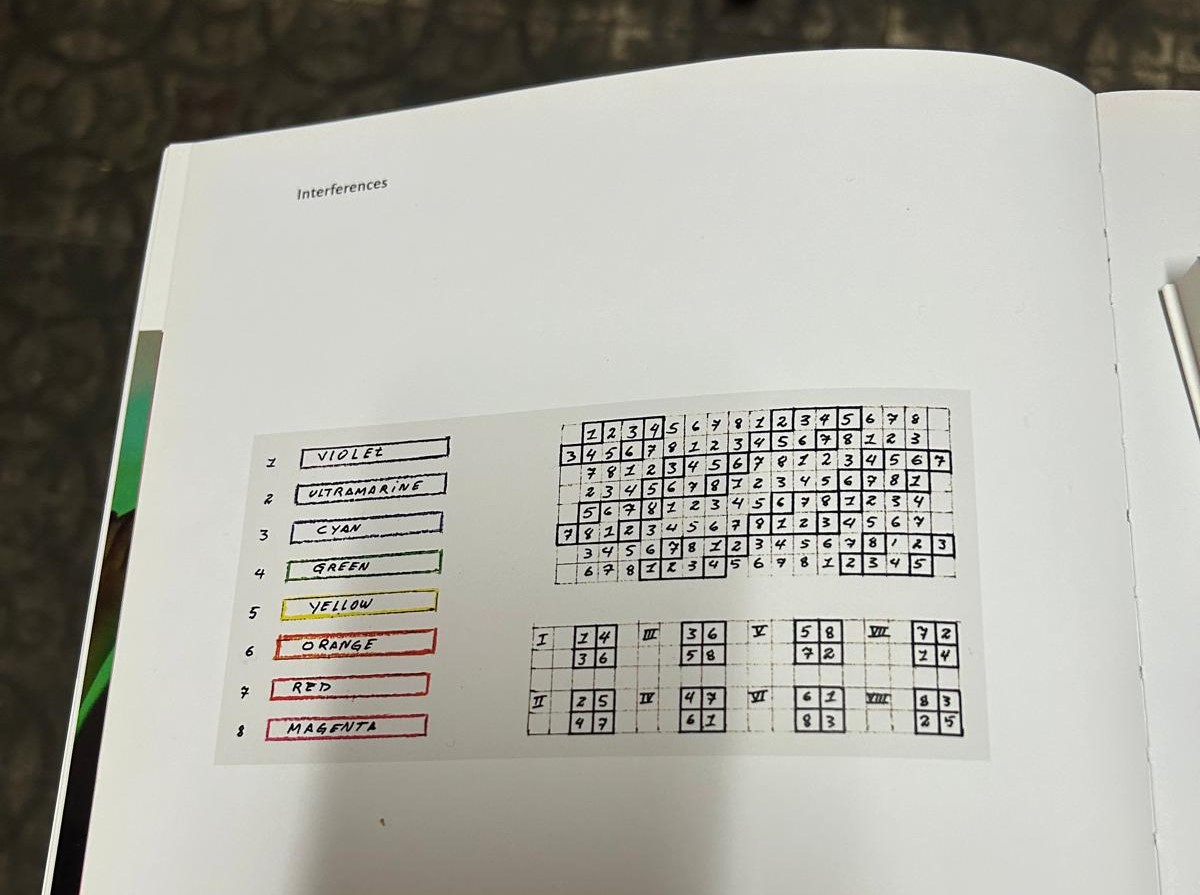
Have you always worked with this code?
No, not at all! Since the 1980s. They are the product of intuition. I do this work to develop intuition. The search for color had a natural development: over the years I refined forms, colors.
With my first work, “Lienzo sobre lienzo,” I was creating a physical space. I wanted to dilute or break, based on color. With the relationship between two colors to create a tension.
What is light?
Light is life, so I work with life; trying to assimilate from light the proposals I want to offer.
And color?
Color influences emotions. I associate all colors with emotions, but it goes beyond that. It’s not that red is for this, or blue for that. I get into the work and I go forward, like when you jump into a pool. When I finish, it’s like it’s out of my hands. It’s something you offer; a time of your life, something that was important to you and you want to offer it.
Richard Earl Thompson said that color was unlimited, always changing. Ungraspable?
It’s true, always, always. But that shouldn’t worry you. You worked with a color and if it changes later, what are you going to do? It’s life. You have a son and you thought he would be one way, and he turns out another. What happens? Nothing, he’s still your son. That’s how it is.
You studied to be an accountant. How did you end up in the visual arts?
When I moved to NY, an internal search began in me. It was a total change, mentally, emotionally…. It seems that art was what I was looking for. I wanted to study architecture in Cuba, but I couldn’t, because I had to work during the day. The only option to get a degree was to be a public accountant, as it was called then. I didn’t even draw. My immersion in art happened when I moved to New York.
Your career began to take off in 1964. How did it happen?
Little by little. I didn’t jump into a pool. I went to study art at the MoMA, for 3 or 4 years. But the most important thing wasn’t the school, but the environment: all my friends were artists, who helped me, taught me, protected me.
I shared a studio with Peter Forakis, a sculptor from California, who greatly influenced me and at times was my teacher. Also [Mark] Di Suvero, and many more.
And Andy Warhol, with whom you collaborated on two films…
Sure, speaking of friendships. I lived in the East Village and a block from where I lived was Max’s Kansas City, a bar where young artists went, including Andy. We met there, and we had a friendly relationship.
Carmen Herrera — divine, divine, divine — was introduced to me by a Cuban gallery owner, Florencio García Cisneros, who had the Cisneros Gallery, where I was exhibiting in the city. The only thing I remember about the meeting is that she said to me: “Waldo, come and see my painting because I’m sure you will like it.” I looked at her and thought: “This lady makes flowers.” But anyway, I went to see it. And I was amazed. We became good friends.
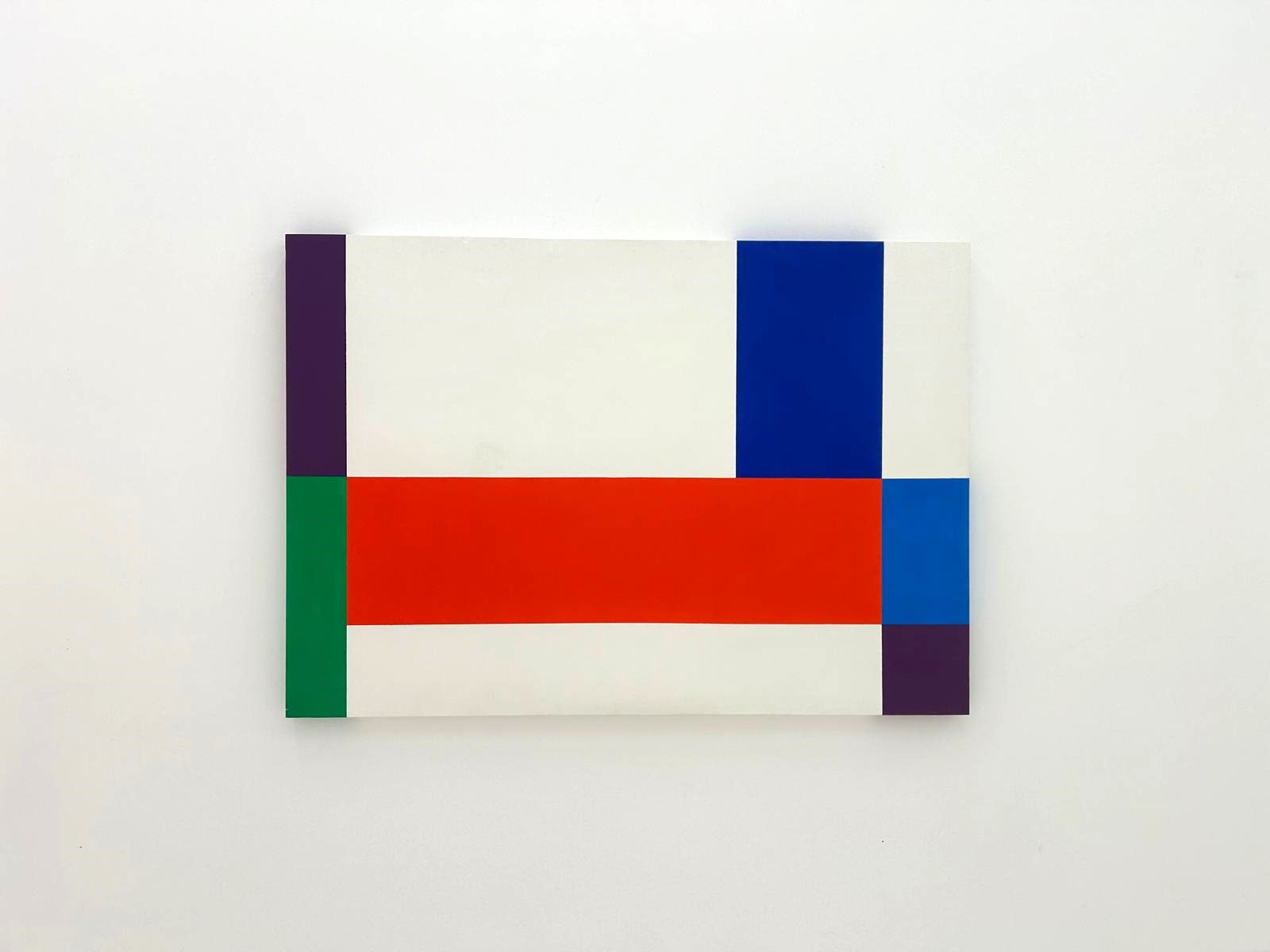
Do you have a favorite color or colors?
No. All the colors of the spectrum are mine, mine!
And what about the shape?
I have worked with the circle, but I could say that the straight line is easier for me. But for me all the shapes are the same, I don’t have a favorite one. What is different is the color. By making the shape more or less uniform, you give importance to the color.
Even though concrete art does not represent symbols or ideas from the natural world, are you inspired by anything?
No, I am not inspired by anything. In the work itself, in intuition. I repeat: color. I abstract myself from what its packaging could be. That would be something else.
However, you did a series called Pinturas negras (1997); the absence of color.
Light is the opposite of black. Black is the absence of color. When you put black in a composition, you create tension, beyond the tension of the colors themselves; this is a more obvious tension, which is also part of the expression.
At first, the intrusion of black into my painting was a surprise to me. I related it to Cuba, to the forces that destroyed that nation so full of joy and color. But from then on, that was just an idea, not the main thing; and black came to represent a force. A very real positive-negative relationship; so I worked with that.
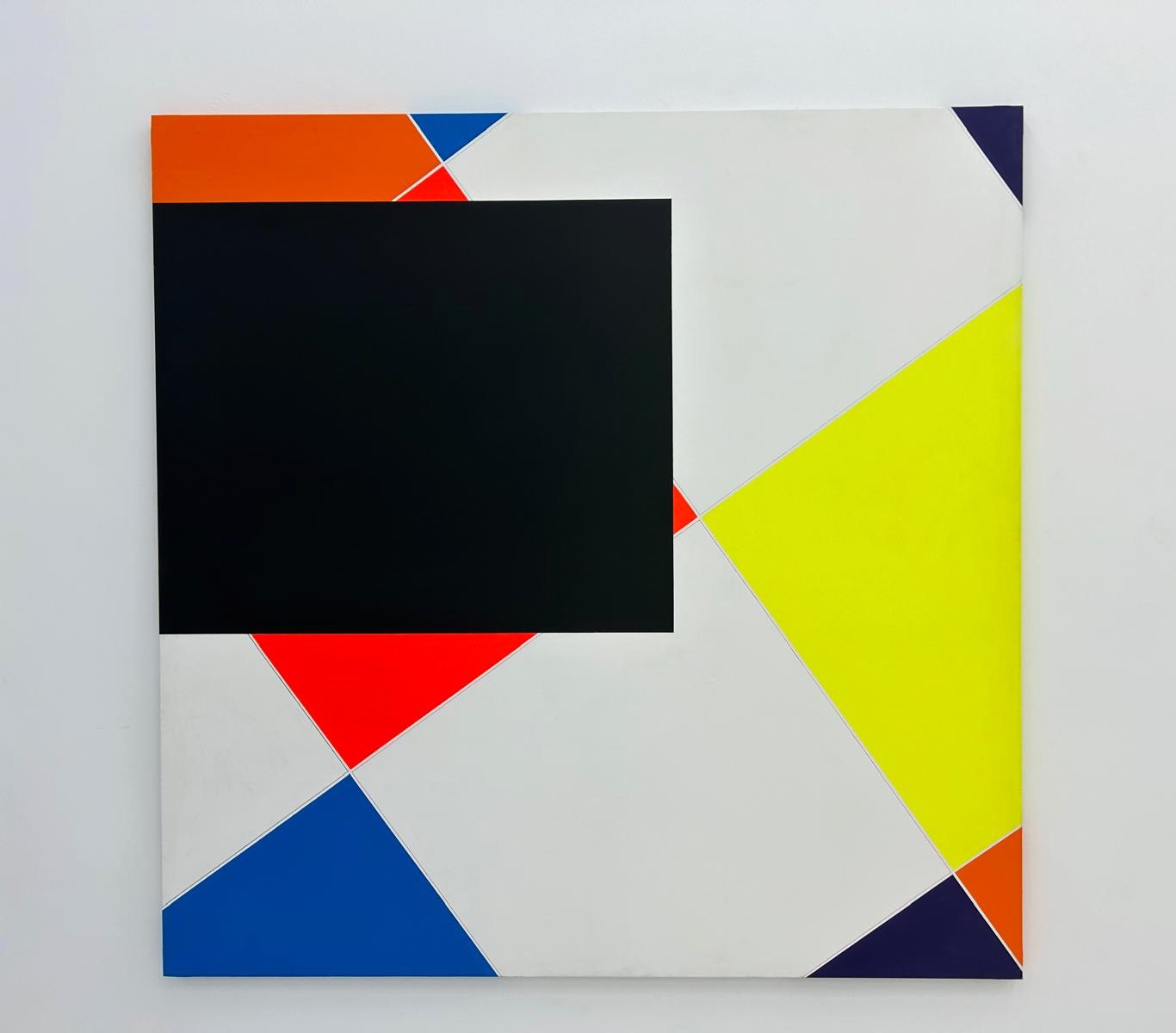
Has coexistence, the tension between two given colors ever been bothersome to you?
It happens constantly. Sometimes it works and there is harmony, or sometimes they fight; they are good, they are bad, they fight. It is life; but instead of two people, two colors. There is no difference. They fight, they love each other, they hate each other, they fight. You start to study complementary colors, cold ones, warm ones; but when you start working, it’s a sensitive issue.
I do not work for decoration. If a painting of mine serves as a good decoration, I am delighted. But, first of all, what interests me is that it influences feelings, life…, and does not change anything. I don’t think I am a revolutionary. But I do influence someone’s feelings. Only if it works for someone, then, what more could I want!
You left Cuba when you were 30, but your paintings are bright, there are radiant colors, like the sun.
For me it’s Cuba, it’s the Caribbean! In any case, Van Gogh is not from the Caribbean and he used the same colors. But I think that from my Cuban origins, colors are more natural for me, “easier.”
When did you begin to identify yourself as concrete?
At first, we called ourselves “constructivists.” But the term for me has a certain Soviet and political connotation. And “concrete” came with Max Bill, who spoke of art being concrete, and I agree.
At the same time, I like figurative art. I am not the only artist: I am one more, who is proposing an emotional solution; ideas, sensations. It’s something that any artist does, regardless of how he does it.
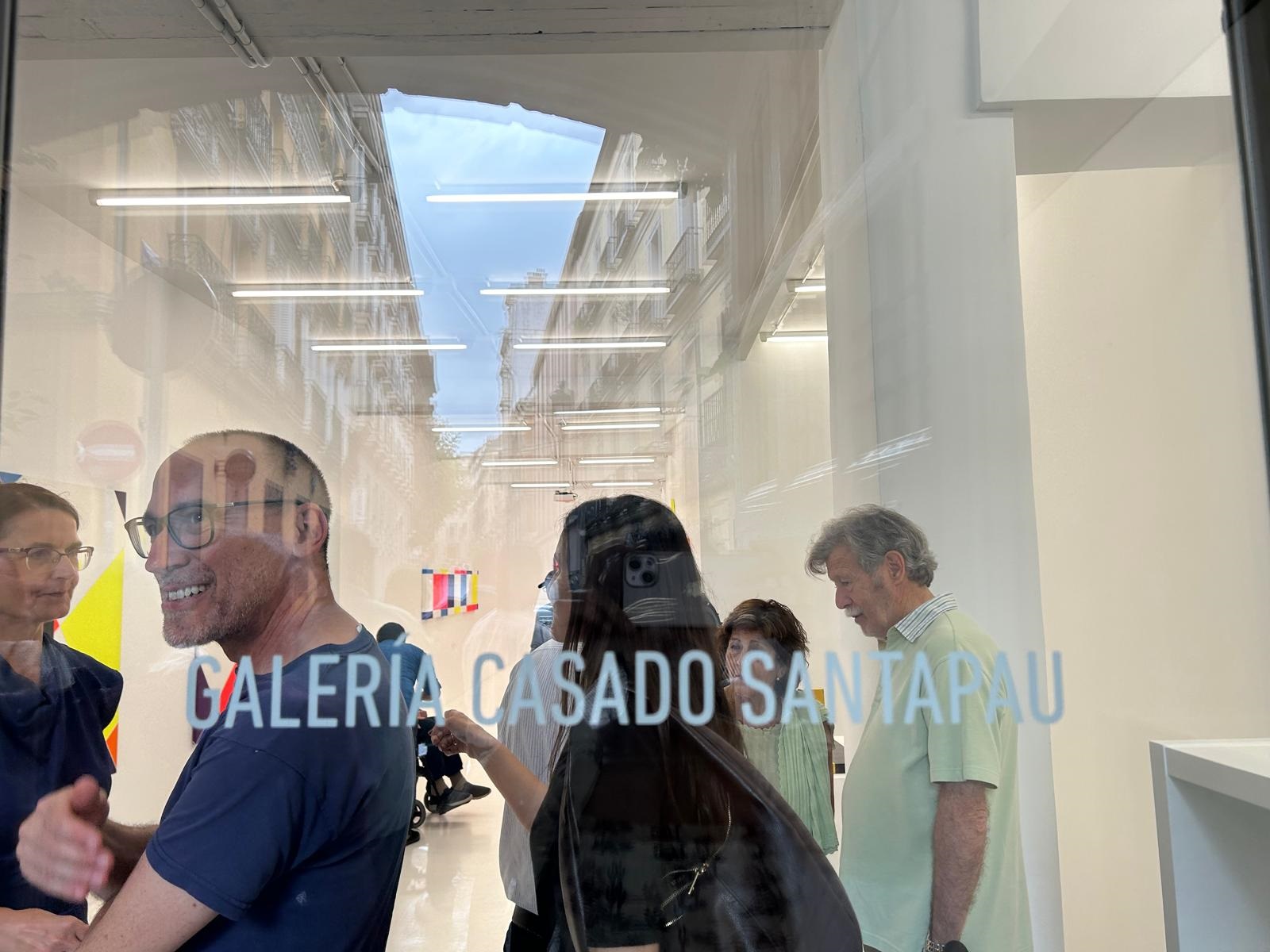
Do you have favorite classics?
I love Mondrian, but my teacher is Malevich, with his search for the truth. I just hope I don’t have an end as tragic as his. I am past the age that Malevich was when he died and I continue painting.
Painting is really the only thing I have. It’s an expression, a need, something I value, and a way of saying what I want and of thinking that I am influencing…. someone. I think that is enough.
The color code that I started using in the 1980s, and that until now serves me as a source of intuition, has to do with what Malevich said: that the painting is intuition and reason. To develop intuition, my axiomatic order helps me. It’s very simple, no math or physics: colors as we see them.
I have also worked on three-dimensionality, which for me does not make any difference: the issue is still color. My idea is to “destroy” physical space through color.
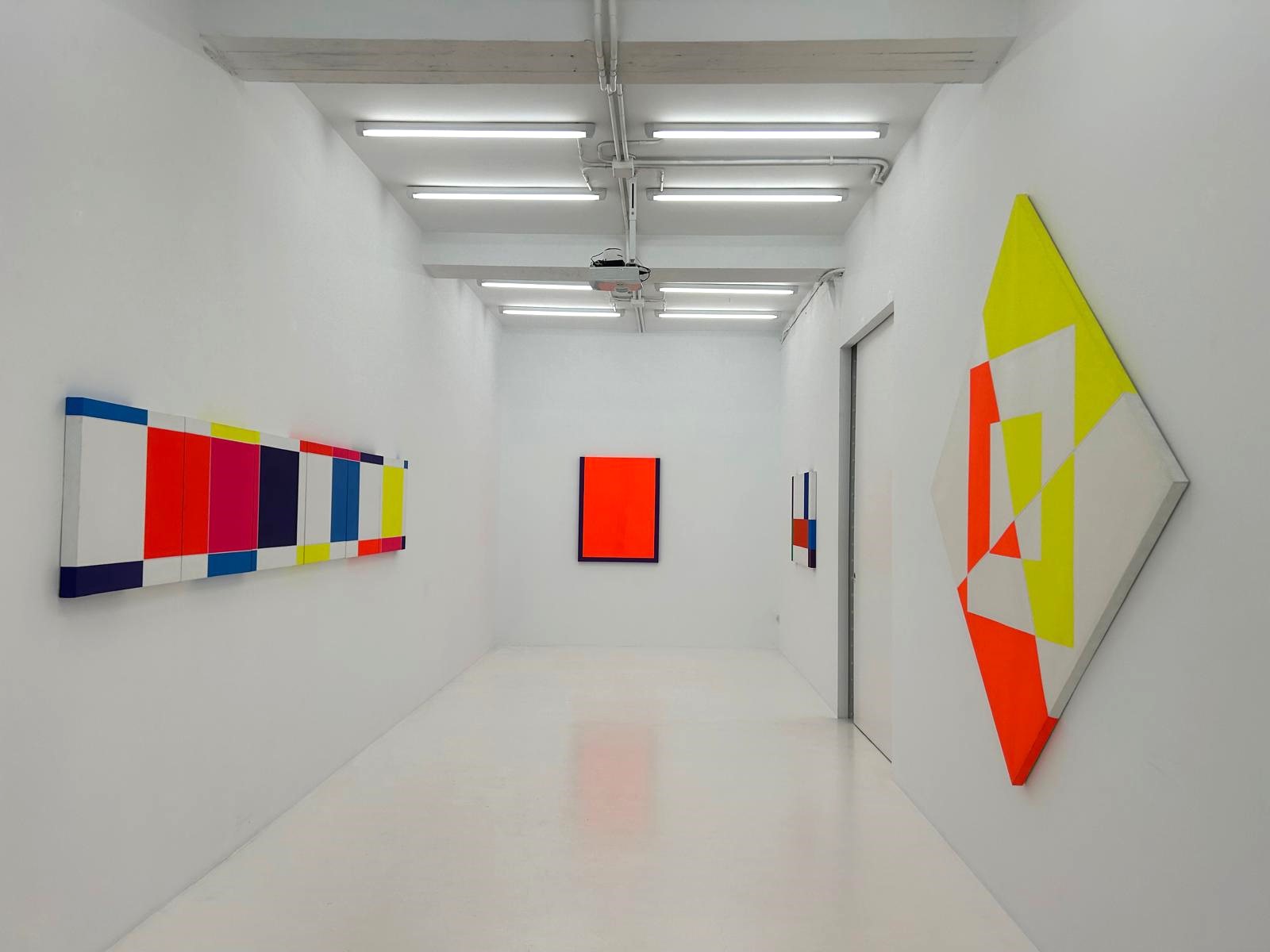
How do you start working on a painting?
In very different ways. For example, I started “Permanencias” with the edge and a central space. I am developing that. But there are other ways. Suddenly I have an idea and I develop it. But each proposal is a universe in itself, I hope a valid one.
Would you like to exhibit in Cuba?
Now there are too many emotions involved. I am part of that, it would be difficult for me to separate my work from the social maelstrom that Cuba is experiencing. How can you offer an image when you are part of all that, which is stronger than your work? It’s too much, too much for the body.
And many years have gone by. I went to New York in 1959. I moved to Madrid in the 1970s, lived five years in Liège, Belgium, and two years in South America; the rest, here. Always from Atocha Street onwards. Just like in NY, where I never lived above 14th Street; here it’s always been east of Atocha.
Do you like the colors of Madrid?
I love them. The sky is wonderful, the light. I think I am very lucky to live in Madrid; I am a chosen one. For example, a foggy day like in Paris or London, there may be one or two; but then the sun comes. I am happy to live in Madrid, I am a cat! (adopted).
And Banes?
It is a small city, in what is now Holguín ― Oriente when I was born. Almost everyone in my family was from Santiago de Cuba, but my father moved to Banes and there he was a lawyer, a notary. It was a nice city. I have good memories of Banes, but when I finished high school, I went to Havana and never went back.
Then, in 1959, I went to New York, but I have great memories of Cuba, the thing is that I have been away for sixty years now… Cuba… Besides, it’s a very current idea, it’s always present, they do not let you forget Cuba.
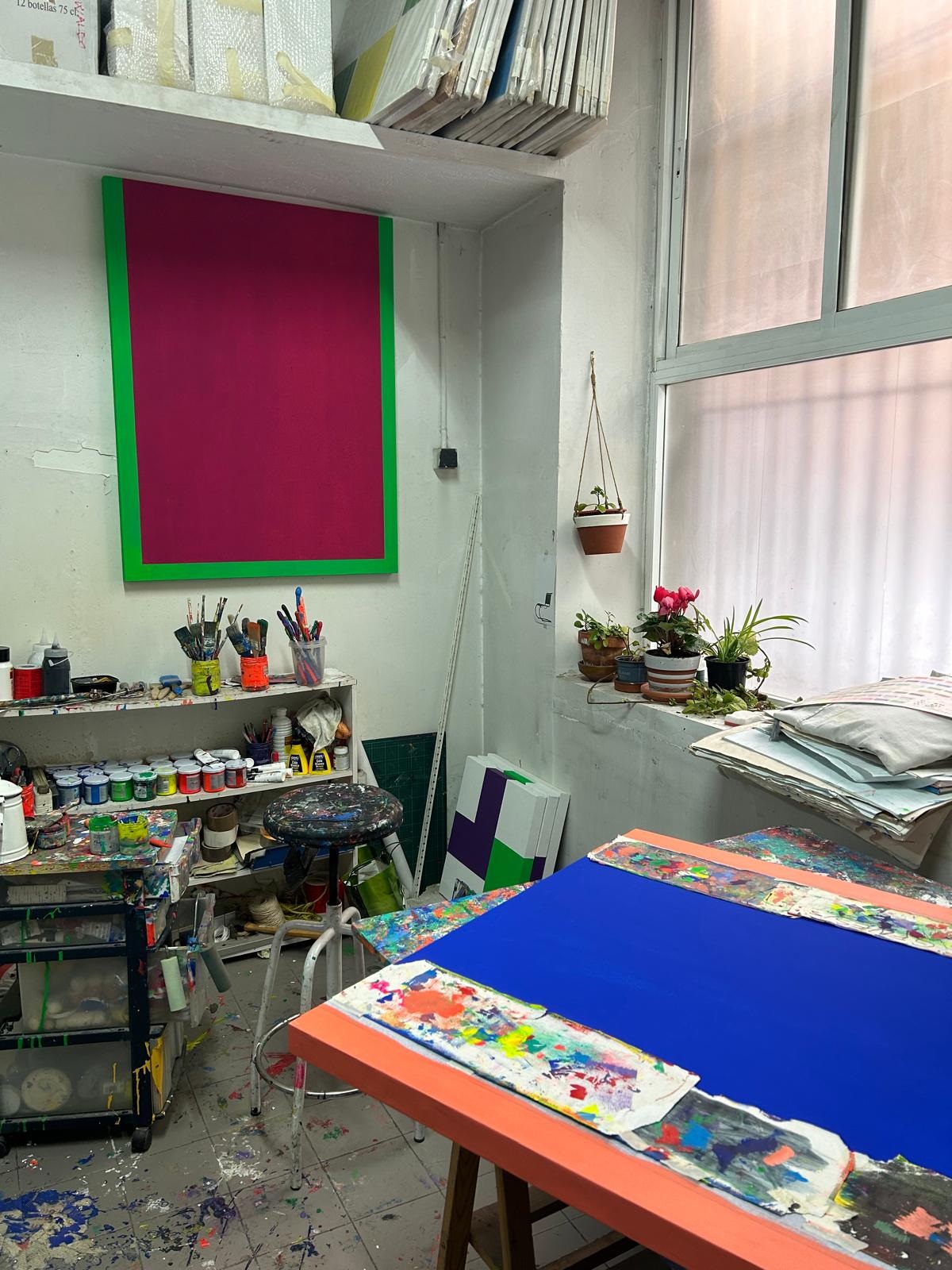
***
In mid-July I attended the opening of the exhibition “Less For More,” by Waldo Balart, which remained on display until July 27 at the Casado Santapau Gallery in Madrid. There Waldo, laughing, said that it would surely be his last exhibition. Someone around him told him no, and then, seriously, he said: “The best thing is to always do it as if it were the last.”
________________________________________
Video: Carla Valdés
* Balart had no relationship with the Ten Concrete Painters.



